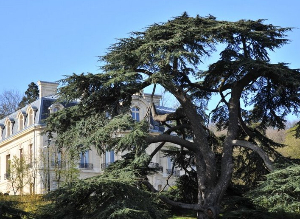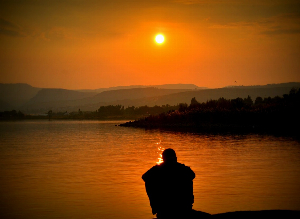I learned to breathe and manage stress better in the face of COPD
Published 3 Oct 2019 • By Louise Bollecker
What is respiratory rehabilitation? This multidisciplinary medical treatment helps put patients in control of their condition, making it possible for them to better stabilize and live with COPD. Maria, a Carenity member with stage 3 COPD, shares her experience with, and explains what is, respiratory rehabilitation.

Hi Maria, could you explain what respiratory rehabilitation is?
Respiratory rehabilitation (aka pulmonary rehabilitation) is a program consisting of therapeutic education workshops focused on helping patients better understand COPD and supervised physical activities/exercises focused on improving patients' breathing and living with COPD. Respiratory rehabilitation is a multidisciplinary medical treatment. I am firmly convinced of its effectiveness.
Can this program be done at home?
Yes, it can be done at home with physical therapists who specialize in this area. Here, in France, there are also "respiratory recovery" networks, but I personally prefer a rehabilitation centre. You can participate in respiratory rehabilitation programs in a hospital or a clinic.
How long do stays in respiratory rehabilitation clinics last?
The stay usually lasts between 4 and 5 weeks in a hospital. In the hospital I attend, the program is 3 times a week and there are between 15 and 20 sessions.
Are there many respiratory rehabilitation clinics in your area?
Since 2003, I have been rehabilitating myself in the Taverny centre in the Val d'Oise. There are quite a few centres in France, but there is not enough because the waiting lists are quite long, especially if the centre has a good reputation. You are able to choose the centre you wish to attend; however, as far as transport is concerned, you have to take a good look at it, because the CPAM (the French social security) no longer wants to reimburse long commutes.
Editor's note: There are many pulmonary rehabilitation programs in the United Kingdom but some programmes will have waiting lists. More information here.
How many patients normally attend sessions?
Generally, we are divided into groups of a dozen people, never more, sometimes less, depending on the proposed activities.
Could you describe a typical day in a respiratory rehabilitation program?
A typical day is equal to physical exercise, bicycling, and respiratory physiotherapy. Therapeutic education workshops are then added, the topics of which often are defined with the nurse in charge of the workshops. There is also outdoor hiking routes, sophrology, personalized therapeutic attention, dietary monitoring and, for 2 years, the spirometry, which is very useful for breathing.
What do you think are the benefits of respiratory rehabilitation?
I have learned to breathe better and control my stress better in the face of this commonly unknown illness for general practitioners and even for some pulmonologists. I also have learned to control my exertion and increase my endurance. These sessions have allowed me to regain a little ease of breathing without feeling like I was suffocating. Through respiratory rehabilitation, our respiratory and cardiac function is strengthened.
In your case, what has improved the most in your daily life?
My breathing, and that's essential! I also have learned to be less afraid to live with this disease and how to use oxygen more appropriately, as well as be more comfortable living on oxygen.
>> Read Mary's testimony on oxygen therapy
What's the best advice you've ever been given in this context?
I was told I could do anything but in a different way. This gave me back the self-confidence that I had lost.
What advice would you give to a person with COPD?
Attend a respiratory rehabilitation program to stabilize COPD and avoid progressing to the next stage, even if you have been recently diagnosed with COPD or are in the early stages of the disease. A person needs to work to stabilize COPD because there is no cure for it.
Anything else you would like to add?
My first stay in a respiratory rehabilitation centre probably saved my life. Also, above all keep moving, move without counting, but without losing your breath!
Many thanks to Maria for explaining respiratory rehabilitation and sharing her experience with it!
Are you familiar with respiratory rehabilitation (aka pulmonary rehabilitation)? Have you participated in this treatment or are you considering participating in it?

 Facebook
Facebook Twitter
Twitter




